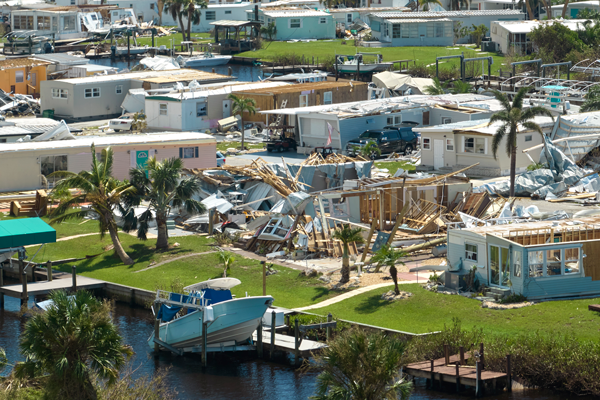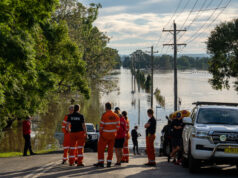Hurricane Ian caused around 120 deaths and an estimated US$65 billion in damage to the US state of Florida, which is now grappling with crucial questions around the reconstruction effort.
With a rare show of unity between President Joe Biden and Florida Governor Ron DeSantis, there is hope that the political barriers to reconstruction will be minimal, but federal, state and local authorities are still faced with a major cleanup operation and beyond that key decisions need to be made on planning and policy.
DeSantis said some areas would have to build “from scratch because they will not be able to rebuild.”
Amid the disaster, there have been some positives. Storm-generated disaster has been, where possible, sorted into multiple categories for collection, enhancing the ability for recycling.
Multi-billion dollar upgrades to the Florida electricity grid in recent years improved the resilience of the network, including a sizeable investment in laying cables underground.
Legislation passed in 2019 requires power companies to file 10-year storm protection plans, making it easier for them to bury power lines with an estimated 40% now underground.
“That makes a big difference because we’re not rebuilding transmission,” Florida Power & Light chief executive Eric Silagy told local media.
In the immediate reconstruction phase, building permit fees have been waived for a range of repairs, such as roofing, window and door replacement and for sea walls.
In the longer term, planners are being challenged on how to rebuild a state which, in many areas, is nothing like it was before Ian hit in late September.
Issues for policy makers span decisions on affordable flood insurance, the quality of housing, and the wisdom of building on exposed coasts – a question which raises the often controversial question of climate change.
“Some capacity for new construction could be moved to reconstruction,” said Peter Dyga, chief executive of the Florida East Coast chapter of Associated Builders and Contractors.
“We can’t continue with the same level of new construction in some parts of the state as we try to build.”
The rebuild will also take time. Property owners are now in the phase of assessing the damage, working with insurers and understanding their options. Then there is the issue of labour shortages in the building and construction industries, which are expected to slow progress.
In an article published in the US edition of The Conversation, Michelle Annette Mayer – the director of the Hazard Reduction and Recovery Center and Associate Professor of Urban Planning at Texas A&M University – said that recovery would take years, and non-profit organisations would play “pivotal roles” after federal government aid ran out through bodies such as FEMA, the Federal Emergency Management Agency.
Some people, she said, never return and rebuild after a disaster. She said New Orleans, for example, now had a smaller population after Hurricane Katrina and the city was “more white and Hispanic, indicating that many Black residents never returned.”
“People who recover first are usually wealthy and white,” Mayer said.
“Those facing many hardships even before a disaster occurs are more likely to never recover fully, because of inequities at each step.”
In the wider rebuilding effort, the call is to “build back smarter.”
“There’s no point in repeating the same mistakes in exactly the same way,” Auroop R. Ganguly, a professor of civil and environmental engineering at Northeastern University, told the New York Times.
When it comes to rebuilding, he said, “there is a tendency for people to look in the rearview mirror” and assume that what was built before is still tenable.
The Times article cited an expert view that rebuilding coastal communities in particular will require local leaders and city planners to strike a balance between investments in so-called gray infrastructure — things like dams, levees, flood gates and sea walls — and green defenses such as wetlands, oyster reefs, and mangrove forests.
Repeated disaster-and-rebuild cycles has prompted some communities to make a painful calculation about not just how to rebuild, but whether to rebuild at all. Officials are increasingly, though often reluctantly, relocating communities away from vulnerable areas in a controversial process known as managed retreat.
“Retreat”, the Times article said, is a word that signals defeat, something that’s hard to swallow for families that have lived in these areas for generations. Retreating from land may also threaten culture, traditions and a way of life.
In some cases, implementing managed retreat can also be an inequitable process, particularly for low-income and minority homeowners who already have less financial protection to brace against climate risks.
Federal programs to help Americans relocate away from disaster-prone areas gave more assistance to wealthier counties, according to a 2019 study revealed.














